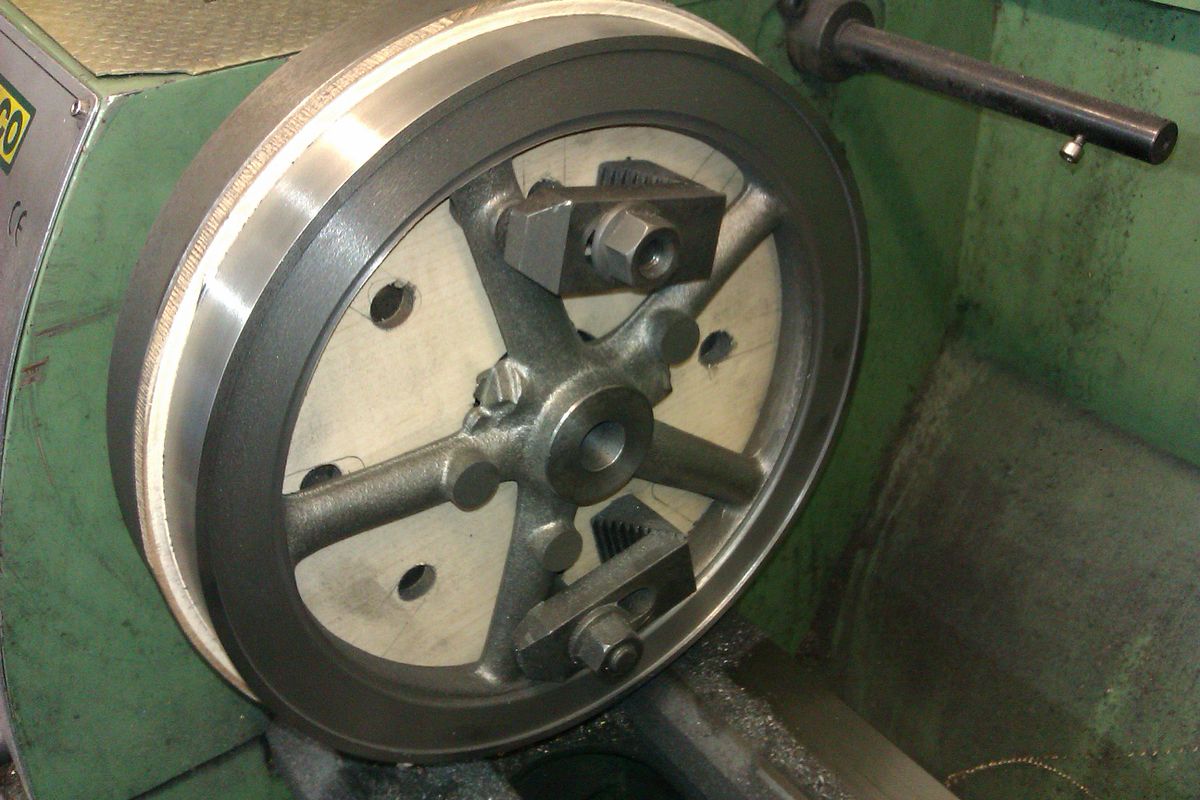Tin Falcon
Well-Known Member
- Joined
- Jul 9, 2007
- Messages
- 7,207
- Reaction score
- 788
This post was prompted by the recent thread and discussion of 4 jaw chucks.
Since work holding is such an important part of lathe work and castings and other awkward shapes can be a challenge to set up I thought I would start this discussion.
In reading many of the old machining and Model engineering books it seems like face plate work was the norm a hundred years ago and for a long time after.
In modern times we are spoiled by many types of chuck and collet systems and the face plate sits in a drawer ,in a cabinet or on a shelf somewhere.
My face plate work has been minimal . I have used the face plate as a drive plate for driving the dog while turning on centers and I have used a face ple as a friction drive when truing up a round disk that was saw cut and I have trepanneded one or twice. with the same setup.
So I would like to hear some comments and get a friendly discussion going. I expect some guys have a face plate they never used and some of the guys who have machined for decades can share there experience with face plate setups. And if you know of a good books that shows a good face playe application that applies hear lets see that too.
Looking forward to the posts.
TIA
Tin
PS if we can make this a good thread and stay on track I may make this a sticky.
Since work holding is such an important part of lathe work and castings and other awkward shapes can be a challenge to set up I thought I would start this discussion.
In reading many of the old machining and Model engineering books it seems like face plate work was the norm a hundred years ago and for a long time after.
In modern times we are spoiled by many types of chuck and collet systems and the face plate sits in a drawer ,in a cabinet or on a shelf somewhere.
My face plate work has been minimal . I have used the face plate as a drive plate for driving the dog while turning on centers and I have used a face ple as a friction drive when truing up a round disk that was saw cut and I have trepanneded one or twice. with the same setup.
So I would like to hear some comments and get a friendly discussion going. I expect some guys have a face plate they never used and some of the guys who have machined for decades can share there experience with face plate setups. And if you know of a good books that shows a good face playe application that applies hear lets see that too.
Looking forward to the posts.
TIA
Tin
PS if we can make this a good thread and stay on track I may make this a sticky.






